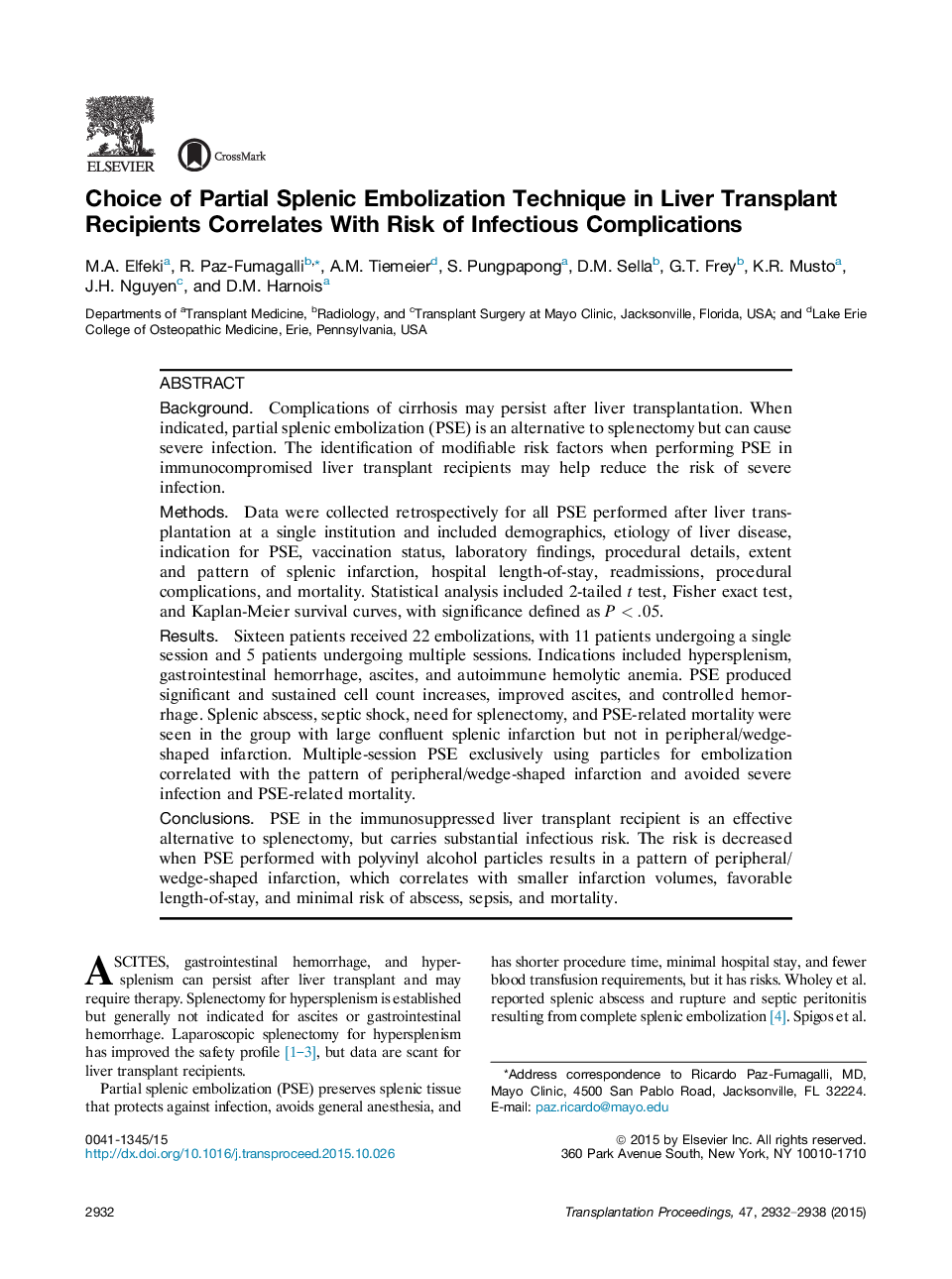| Article ID | Journal | Published Year | Pages | File Type |
|---|---|---|---|---|
| 4255848 | Transplantation Proceedings | 2015 | 7 Pages |
•Partial splenic embolization is an effective alternative to splenectomy to manage low blood cell counts, ascites, and hemorrhage in the liver transplant recipient.•The embolization technique has an impact on outcomes, particularly severe infection and mortality.•When a large confluent splenic infarction is created, abscess and death appear to be more likely compared with smaller-volume infarction with a peripheral/wedge-shaped pattern.•Small-volume (<50%) sequential partial splenic embolization using particles exclusively for the embolization is more likely to produce peripheral/wedge-shaped infarction and appears to be a safer technique.
BackgroundComplications of cirrhosis may persist after liver transplantation. When indicated, partial splenic embolization (PSE) is an alternative to splenectomy but can cause severe infection. The identification of modifiable risk factors when performing PSE in immunocompromised liver transplant recipients may help reduce the risk of severe infection.MethodsData were collected retrospectively for all PSE performed after liver transplantation at a single institution and included demographics, etiology of liver disease, indication for PSE, vaccination status, laboratory findings, procedural details, extent and pattern of splenic infarction, hospital length-of-stay, readmissions, procedural complications, and mortality. Statistical analysis included 2-tailed t test, Fisher exact test, and Kaplan-Meier survival curves, with significance defined as P < .05.ResultsSixteen patients received 22 embolizations, with 11 patients undergoing a single session and 5 patients undergoing multiple sessions. Indications included hypersplenism, gastrointestinal hemorrhage, ascites, and autoimmune hemolytic anemia. PSE produced significant and sustained cell count increases, improved ascites, and controlled hemorrhage. Splenic abscess, septic shock, need for splenectomy, and PSE-related mortality were seen in the group with large confluent splenic infarction but not in peripheral/wedge-shaped infarction. Multiple-session PSE exclusively using particles for embolization correlated with the pattern of peripheral/wedge-shaped infarction and avoided severe infection and PSE-related mortality.ConclusionsPSE in the immunosuppressed liver transplant recipient is an effective alternative to splenectomy, but carries substantial infectious risk. The risk is decreased when PSE performed with polyvinyl alcohol particles results in a pattern of peripheral/wedge-shaped infarction, which correlates with smaller infarction volumes, favorable length-of-stay, and minimal risk of abscess, sepsis, and mortality.
